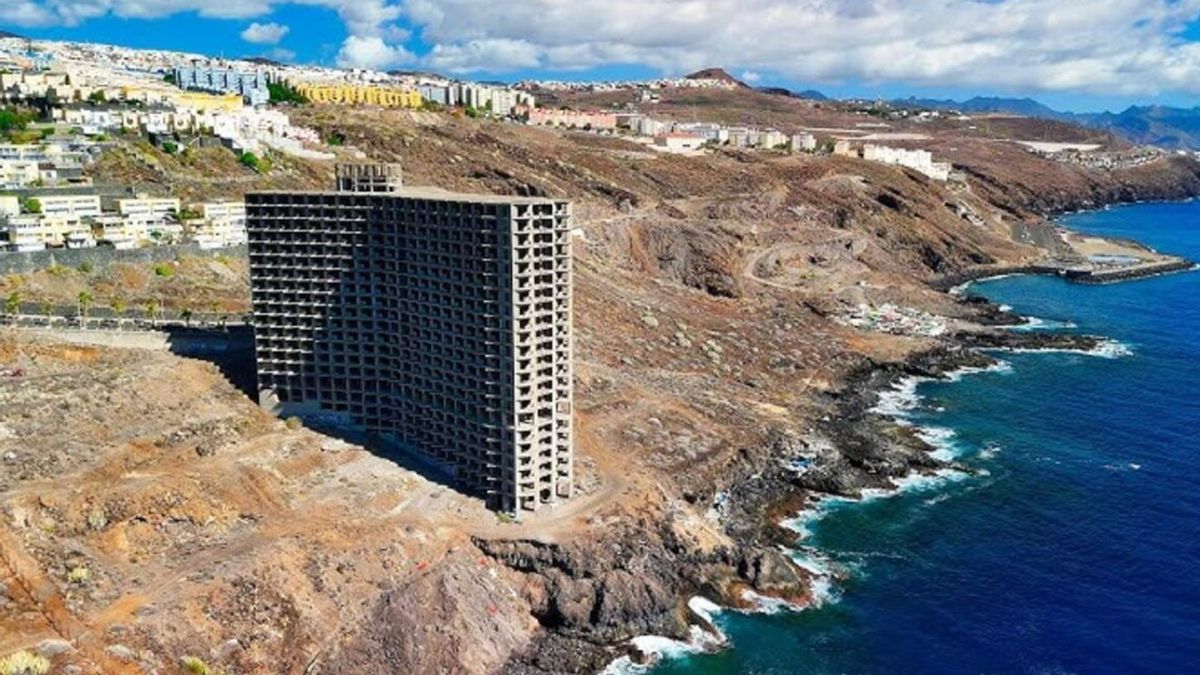The Cabildo of Tenerife announced on Wednesday that it will grant 500,000 euros to the Santa Cruz de Tenerife City Council to fund part of the demolition of the old 22-storey hotel that began construction by the sea in 1973 and was ultimately halted due to financial issues and irregularities in its permits. The building, an unfinished monstrosity that stands out against a rocky coastline, will be removed from the shoreline, but instead of restoring the environment, a plan is being developed to construct, among other things, a promenade, communal areas, and a “safe” bathing zone.
This was explained on Wednesday by the insular corporation, led by Rosa Dávila (CC), who added that this area of the coast will be “completely transformed.” It is a rocky coastline, with little urban development, and close to the island’s capital, but until now, it has not been exploited for urban or tourism purposes.
Demolition, the first step to transform the entire coastline
The initiative has a total funding of three million euros, combining the 500,000 euros contributed by the Cabildo and the 2.5 million granted by the Government of the Canary Islands, in a collaboration between administrations to promote “a long-awaited project” by the neighbourhood of this district, added Dávila.
The building was designed in 1973 as a luxury hotel with 741 apartments spread over 22 floors, but construction was halted in 1975 due to urban irregularities, financial problems, and the lack of final permits.

Since then, the structure has remained abandoned and occupies between 35,000 and 40,000 square metres, making it “a dislocated mass that disrupts the coastal landscape, a completely obsolete structure that, in addition to its visual impact, poses a real risk to the area’s safety,” according to the president of the Cabildo.
The Santa Cruz City Council plans to complete the expropriation throughout 2025, after which the demolition will be tendered. The estimated timeframe for executing the works is 36 months, so the project could be completed between 2027 and early 2028.
The aim of the project is to “ecologically restore the area,” but not by renaturalising it, rather by “returning access to the sea and replacing a degraded structure with a natural and safe space.”
“This action is the first step towards making a major project that will completely change this part of the Añaza coastline,” Dávila emphasised, as it aims to reclaim this space for people, restore access to the sea for residents, and transform an abandoned area into a natural, cared-for, and safe place. That is, the coastline will not be returned to its natural state prior to the building, but this will be removed to create anthropised spaces, including a maritime platform for bathing known as La Mareta, according to the Cabildo.
Additionally, there are plans for “connection with the future coastal promenade, the protection of the archaeological heritage of the area, and a medium-term projection to integrate it into the municipality’s sustainable mobility systems.”















